Next Japanese solar sail will be 10-15 times bigger than Ikaros solar sail and have a far better ion engine
by noreply@blogger.com (brian wang) from NextBigFuture.com on (#2G73H)
A researcher with JAXA (Japan Aerospace Exploration Agency), Matsumoto is deeply involved in the design of the space sail that will pick up where Japan's IKAROS left off. Launched in 2010, the latter was a square sail 14 meters to the side that demonstrated the feasibility of maneuvering a sail on interplanetary trajectories. JAXA has talked ever since about going to Jupiter, but the challenges are formidable, not the least of which is the question of generating enough power to operate over 5 AU from the Sun.
(H/T Centauri Dreams)
The new JAXA sail, which has been in the planning pipeline since before IKAROS flew, will span 50 meters to the side, 2500 square meters that will contain the 30,000 solar panels - thin film solar cells attached to the entire surface of the sail membrane - necessary to operate at the 5.2 AU distance of Jupiter's trojan asteroids.
Like IKAROS, the sail will use liquid crystal reflectivity control devices as a means of attitude control. But the new sail will also carry a high specific impulse ion engine for maneuvering among the trojan asteroid population. Here we're at a key issue in the mission, for operating this far from the Sun, generating electrical power becomes increasingly difficult, and the craft will also need to perform numerous trajectory changes. Just as significant as the sail itself, then, will be the operational success of the new sail's solar panels and ion engine.
The sail is to be made up of 10-micrometer-thick polyimide, with the payload attached to the center of the sail. Current plans are for launch in the early 2020s. The Jupiter trojans are a group of asteroids that share orbits with the giant planet, clustering in its L4 and L5 Lagrangian points. There should be no shortage of candidates, for the total number of Jupiter trojans greater than 1 kilometer in size is estimated at about a million. The JAXA sail will perform both flyby and rendezvous operations, with a landing on the surface of a 20-30 km asteroid, operations there and, if all goes well, a sample return to the Earth in the 2050s.
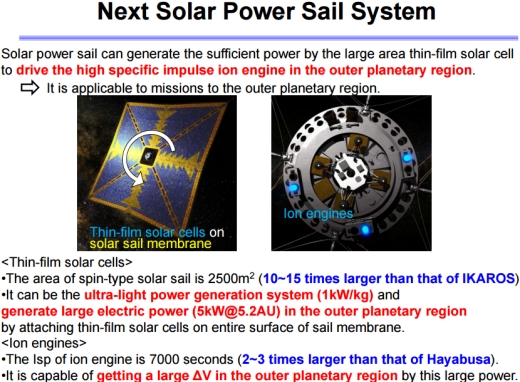
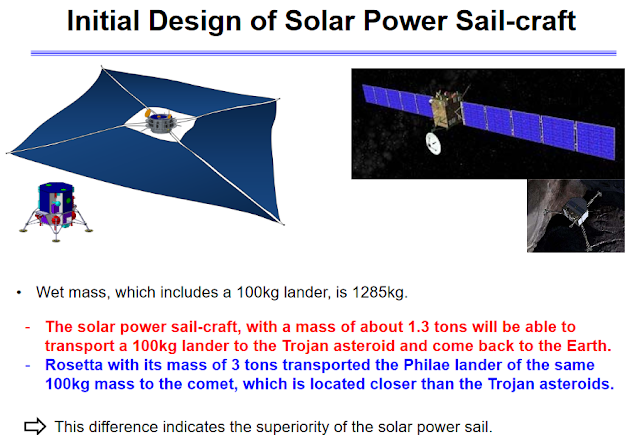
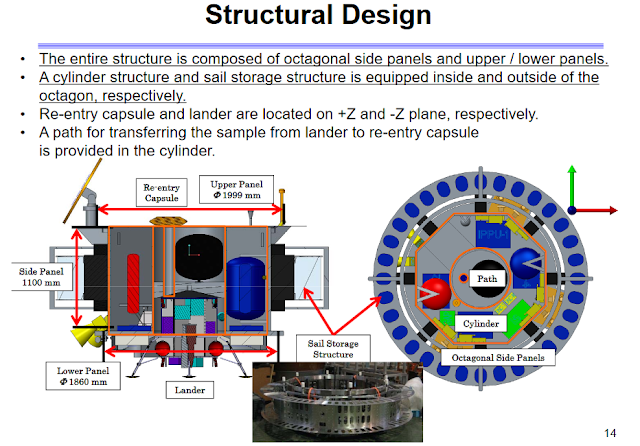
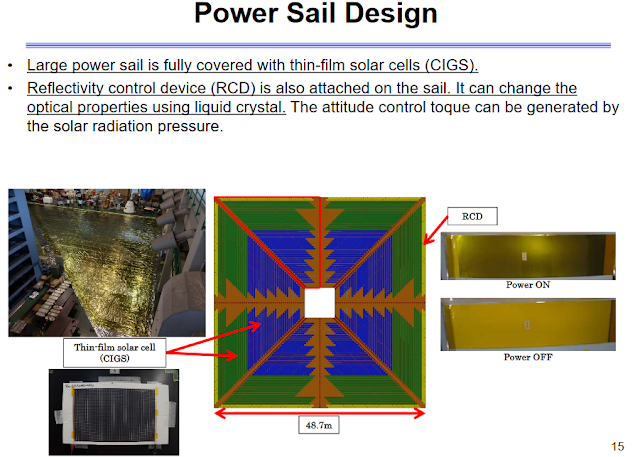
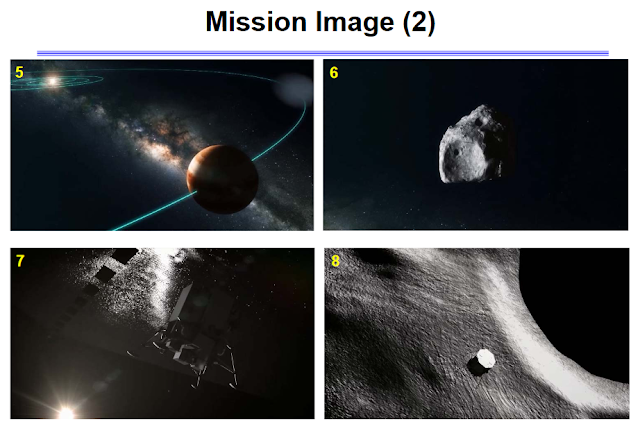
Read more










(H/T Centauri Dreams)
The new JAXA sail, which has been in the planning pipeline since before IKAROS flew, will span 50 meters to the side, 2500 square meters that will contain the 30,000 solar panels - thin film solar cells attached to the entire surface of the sail membrane - necessary to operate at the 5.2 AU distance of Jupiter's trojan asteroids.
Like IKAROS, the sail will use liquid crystal reflectivity control devices as a means of attitude control. But the new sail will also carry a high specific impulse ion engine for maneuvering among the trojan asteroid population. Here we're at a key issue in the mission, for operating this far from the Sun, generating electrical power becomes increasingly difficult, and the craft will also need to perform numerous trajectory changes. Just as significant as the sail itself, then, will be the operational success of the new sail's solar panels and ion engine.
The sail is to be made up of 10-micrometer-thick polyimide, with the payload attached to the center of the sail. Current plans are for launch in the early 2020s. The Jupiter trojans are a group of asteroids that share orbits with the giant planet, clustering in its L4 and L5 Lagrangian points. There should be no shortage of candidates, for the total number of Jupiter trojans greater than 1 kilometer in size is estimated at about a million. The JAXA sail will perform both flyby and rendezvous operations, with a landing on the surface of a 20-30 km asteroid, operations there and, if all goes well, a sample return to the Earth in the 2050s.





Read more